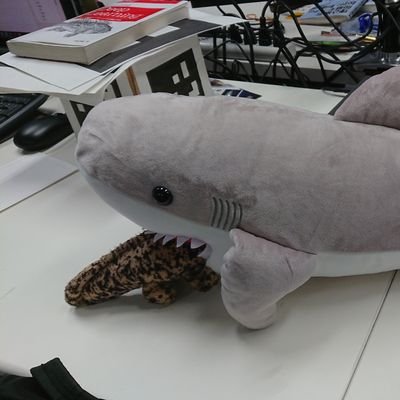結果
| 問題 | No.119 旅行のツアーの問題 |
| コンテスト | |
| ユーザー |
 kei kei
|
| 提出日時 | 2018-08-10 23:57:26 |
| 言語 | C++14 (gcc 13.3.0 + boost 1.89.0) |
| 結果 |
AC
|
| 実行時間 | 2 ms / 5,000 ms |
| コード長 | 4,223 bytes |
| 記録 | |
| コンパイル時間 | 1,844 ms |
| コンパイル使用メモリ | 180,336 KB |
| 実行使用メモリ | 5,376 KB |
| 最終ジャッジ日時 | 2024-09-23 06:01:38 |
| 合計ジャッジ時間 | 2,767 ms |
|
ジャッジサーバーID (参考情報) |
judge5 / judge2 |
(要ログイン)
| ファイルパターン | 結果 |
|---|---|
| sample | AC * 4 |
| other | AC * 19 |
ソースコード
#include "bits/stdc++.h"
using namespace std;
typedef long long ll;
typedef pair<int, int> pii;
typedef pair<ll, ll> pll;
const int INF = 1e9;
const ll LINF = 1e18;
template<class S,class T> ostream& operator << (ostream& out,const pair<S,T>& o){ out << "(" << o.first << "," << o.second << ")"; return out; }
template<class T> ostream& operator << (ostream& out,const vector<T> V){ for(int i = 0; i < V.size(); i++){ out << V[i]; if(i!=V.size()-1) out << " ";} return out; }
template<class T> ostream& operator << (ostream& out,const vector<vector<T> > Mat){ for(int i = 0; i < Mat.size(); i++) { if(i != 0) out << endl; out << Mat[i];} return out; }
template<class S,class T> ostream& operator << (ostream& out,const map<S,T> mp){ out << "{ "; for(auto it = mp.begin(); it != mp.end(); it++){ out << it->first << ":" << it->second; if(mp.size()-1 != distance(mp.begin(),it)) out << ", "; } out << " }"; return out; }
/*
<url:https://yukicoder.me/problems/no/119>
問題文============================================================
=================================================================
解説=============================================================
================================================================
*/
struct DINIC{
#define MAX_V 100
typedef long long ll;
typedef ll CapType;
struct edge {
int to; // 行き先
CapType cap; // 容量
int rev; // 逆辺
edge() {}
edge(int to, CapType cap, int rev) :to(to), cap(cap), rev(rev) {}
};
vector<edge> G[MAX_V]; // グラフの隣接リスト表現
ll level[MAX_V]; // sからの距離
ll iter[MAX_V]; // どこまで調べ終わったか
// fromからtoへ向かう容量capの辺をグラフに追加する
void add_directed_edge(int from, int to, CapType cap) {
G[from].push_back(edge(to, cap, (int)G[to].size()));
G[to].push_back(edge(from, 0, (int)G[from].size() - 1));
}
void add_undirected_edge(int from, int to, CapType cap) {
G[from].push_back(edge(to, cap, (int)G[to].size()));
G[to].push_back(edge(from, cap, (int)G[from].size() - 1));
}
// sからの最短距離をBFSで計算する
void bfs(int s){
fill(level,level+MAX_V,-1);
queue<int> q;
level[s] = 0;
q.push(s);
while(!q.empty()){
int v = q.front(); q.pop();
for(int i = 0; i < (int)G[v].size();i++){
edge& e = G[v][i];
if(e.cap > 0 && level[e.to] < 0){
level[e.to] = level[v] + 1;
q.push(e.to);
}
}
}
}
// 増加パスをDFSで探す
CapType dfs(int v, int t,CapType f){
if(v == t) return f;
for(ll &i = iter[v]; i < G[v].size();i++){
edge &e = G[v][i];
if(e.cap > 0 && level[v] < level[e.to]){
CapType d = dfs(e.to,t,min(f,e.cap));
if(d > 0){
e.cap -= d;
G[e.to][e.rev].cap += d;
return d;
}
}
}
return 0;
}
CapType max_flow(int s,int t){
CapType flow = 0;
for(;;){
bfs(s);
if(level[t] < 0) return flow;
fill(iter,iter+MAX_V,0);
CapType f;
while((f = dfs(s,t,LINF)) > 0){
flow += f;
}
}
}
};
ll solve(){
ll res = 0;
int N; cin >> N;
vector<int> B(N),C(N);
for(int i = 0; i < N;i++) cin >> B[i] >> C[i];
int M; cin >> M;
vector<int> D(M),E(M);
for(int i = 0; i < M;i++) cin >> D[i] >> E[i];
int S = 2*N,T = S+1;
DINIC dinic;
for(int i = 0; i < N;i++) res += B[i]+C[i];
for(int i = 0; i < N;i++){
dinic.add_directed_edge(S,i,B[i]);
dinic.add_directed_edge(i,i+N, INF);
dinic.add_directed_edge(i+N,T,C[i]);
}
for(int i = 0; i < M;i++){
dinic.add_directed_edge(D[i], E[i]+N,INF);
}
res -= dinic.max_flow(S, T);
return res;
}
int main(void) {
cin.tie(0); ios_base::sync_with_stdio(false);
cout << solve() << endl;
return 0;
}
